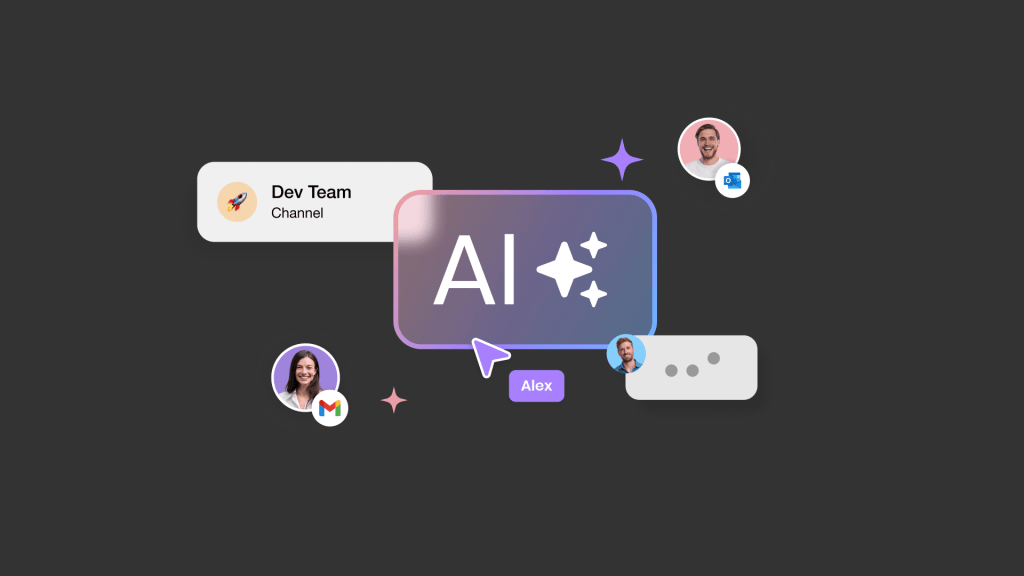Revolutionizing communication with AI-powered email and collaboration

We’re genuinely pleased that Research.com’s review of Spike named us among their top collaboration platforms. Not because it looks good on a slide deck, but because the recognition highlights a shift that’s been building for years: email isn’t dying, it’s evolving. Spike has been pushing that evolution quietly but deliberately.
The problem isn’t communication. It’s context
Most so-called collaboration tools add new layers on top of the same fragmented workflows. Chats, channels, docs, notifications. You still end up bouncing between five apps just to answer one question. Traditional email is no better: endless “Re: Re: Fwd:” threads, buried attachments, and scattered replies pretending to be conversations.
Spike started with a simple premise: stop making people reconstruct context. Bring the entire discussion into one continuous flow that feels natural to read and respond to.
Messages, files, tasks, and calls. All in the same thread. That’s why Spike doesn’t look or act like email as you know it. It feels like chat, but keeps the structure and reliability of email behind the scenes.
What Research.com noticed
In their detailed Spike review on Research.com, the editors highlighted exactly what our users have been telling us: merging email, chat, notes, tasks, and meetings into a single interface isn’t a gimmick.
It’s a relief. No more jumping between apps, copying links into threads, or wondering where the latest version of an idea lives.
They also called out the role of AI-powered features like AI Summary and AI Reply. These aren’t about writing your emails for you. They’re about removing the mental tax of sorting through noise.
AI Summary condenses long threads into a few lines so you can catch up fast. AI Reply suggests quick, natural responses that sound like you, not a bot. Small efficiencies, but multiplied across hundreds of daily interactions, they add up.
The reality: recognition is earned, not marketed
Awards and rankings don’t build trust. Consistent product decisions do.
For years, we’ve resisted turning Spike into another “all-in-one workspace” that tries to do everything. We focus on doing one thing right: helping people communicate without losing context. The fact that Research.com recognized that approach tells us the industry is finally starting to value simplicity over surface features.
Here’s the bigger shift: A recent Zoom and Morning Consult study found that teams using more than 10 apps were twice as likely to spend over an hour a day resolving collaboration issues compared to teams using fewer than five. That’s not a workflow. That’s chaos disguised as productivity.
Spike cuts through that by unifying the core tools teams actually use: email, chat, tasks, and meetings. Nothing extra, nothing bolted on.
Who actually benefits
Spike isn’t designed for one niche. It works wherever communication needs clarity.
- Freelancers and small teams use Spike to manage clients, tasks, and files without juggling multiple tools.
- Remote teams rely on it to stay aligned across time zones with built-in messaging and video calls.
- Educational organizations use it to simplify communication between staff and students.
- Enterprises adopt it to reduce app sprawl and keep internal and external communication in the same flow.
Different use cases, same underlying issue: people just want to work without fighting their tools.
Why this recognition matters (and what’s next)
When a research platform names you a leader, it’s not about self-promotion. It’s a signal that the market is catching up to the way people already prefer to work.
Spike’s evolution has always been guided by real use, not trend chasing. We built conversational email before it was fashionable. We added collaborative notes and tasks when teams needed fewer tabs, not more dashboards.
We integrated AI summaries and replies only when they were genuinely helpful, not because the market demanded an “AI feature.”
Reality check: If you’ve spent 20 years building Gmail muscle memory, this feels jarring initially. Your brain expects separate message documents. Takes about two weeks to adjust. Once you do, going back to traditional email feels like trying to have a conversation through a filing cabinet.
So yes, we’re grateful for the recognition. But the real validation comes every time someone switches from five disconnected apps to one consistent flow and tells us, “This finally makes sense.”
That’s the only metric that really matters.
Read the full Research.com review of Spike to see why experts and users agree that communication doesn’t need reinventing. It just needs to work the way people actually think.




